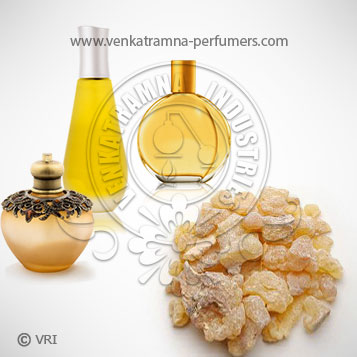
| Botanical Name | Boswellia Serreta |
| Common Name | Frankincense |
| Country of Origin | india,Somalia |
| Solubility | Insoluble in water, soluble in alcohol and oils |
| Specific Gravity | 0.846 @ 72°F |
| Optical Rotation | 13 |
| Refrective Index | 1.467@ 72°F |
| PlantPart | Resin |
| Bland With | This oil blends with Basil, Bergamot, Cardamom, Cedarwood, Chamomile, Cinnamon, Clary Sage, Coriander, Geranium, Ginger, Myrrh and Vanilla. |
| CAS No | 8050-07-5 |
| Flash Point | 95 °C |
| Extraction Method | Steam distilled |
Genus Boswellia is a genus in the Burseraceae family. The genus is widespread in dry areas such as Arabia, northeastern coast of Africa, and India. The species have been useful in traditional medicine for treatment of inflammatory diseases, including asthma, arthritis, cerebral edema, chronic pain syndrome, gastrointestinal disease, tumors, and for enhancing memory and learning function. Boswellia, also known as Indian frankincense, is an herbal extract taken from the Boswellia serrata tree. is a moderate to large sized branching tree that grows in dry mountainous regions of India, Northern Africa and the Middle East. The family of Burseraceae is represented in the plant kingdom with 17 genera and 600 species wide-spread in all tropical regions. There are about 25 known species belonging to Genus Boswellia, most of them occur in Arabia, northeastern coast of Africa and India. Since ancient times, three of these species have been considered as ‘true Frankincense’ producing trees.
Incense has been traded for 5,000 years, was widely used in ancient Egypt, and one of the ingredients of the holy oil in the Talmud. Frankincense was brought back to Europe by Frankish Crusaders (Frank-incense). Its resin is known as olibanum, derived from the Arabic al-luban or 'that which results from milking', referring to the milky sap tapped from the Boswellia tree from which the resinous tears are obtained. Frankincense is considered the holy anointing oil in the Middle East, where it has been used in religious ceremonies for thousands of years. More recently, it has been used in European and American hospitals and is the subject of substantial research. Boswellia serrata is one of the ancient and most valued herbs in Ayurveda. “Gajabhakshya”, a Sanskrit name sometimes used for Boswellia, suggests that elephants enjoy this herb as a part of their diet. Three renowned ancient texts form the pillars of classical Ayurvedic Science, which has its roots in India: Charaka's Charaka Samhita (c.B.C. 700), the first fundamental medical text; Susruta's Susruta Samhita (c.B.C. 600), which attempted to amass the entire medical knowledge, with special focus on surgery; and the two-volume tome comprising Astanga Samgraha and Astanga Hridaya (c.130-200 A.D.), written by Vagbhata the Elder and Vagbhata the Younger, which synthesized the works of Charaka and Susruta and summarized the eight parts of Ayurveda in prose and verse forms. The first two pillars of Ayurveda describe the antirheumatic (antiarthritis) activity of gugguls-the gum-resins of trees.
Color : Yellow transparent liquid @22C with Characteristic odor,
Aroma : A base note with a medium aroma, Frankincense Essential Oil has a warm and spicy, woody odor that is haunting
It contains alpha-pinene, alpha-thujene and octanol, Ketonic alcohol (olibanol), resinous matters (30 - 60 per cent) and terpenes (camphene, dipentene, a- and p-pinene, phellandrene).
The frankincense essential oil is widely known for its therapeutic properties. It is also used as an antiseptic, astringent, carminative, digestive, diuretic, sedative and as a tonic. Since time immemorial, plants and their products have been the primary resource of food, shelter, clothing, flavors, fragrances as also valuable ingredients for medicines for mankind. In this context, natural resins have played an important role. These have also been used as adhesives, as ingredients for cosmetic preparations, as fragrances in daily rituals and in religious ceremonies, as coating materials and also for their different curative powers. The Frankincense resins are the common resins used since ancient times. Frankincense Essential Oil in Pharma In addition to its beneficial use for arthritis, this gummy resin is also mentioned in traditional Ayurvedic and Unani texts as an effective remedy for diarrhoea, dysentery, ringworm, boils, fevers (antipyretic), skin and blood diseases, cardiovascular diseases, mouth sores, bad throat, bronchitis, asthma, cough, vaginal discharges, hair-loss, jaundice, hemorrhoids, syphilitic diseases, irregular menses and stimulation of liver. It is also diaphoretic, astringent, diuretic and acts both as internal and external stimulant. Modern medicine and pharmacology strongly point out to its use as an antiarthritic, antiinflammatory, antihyperlipidemic (controls blood lipids), antiatherosclerotic (anticoronary plaque), analgesic (pain-reliever) and hepatoprotective (protects the liver). Essence of Frankincense Essential Oil The resin of Boswellia species (‘frankincense’, ‘olibanum’) has been used as incense in religious and cultural ceremonies since time immemorial. Its medicinal properties are also widely recognized, mainly for the treatment of inflammatory conditions, as well as in some cancerous diseases, wound healing and its antimicrobial activity.